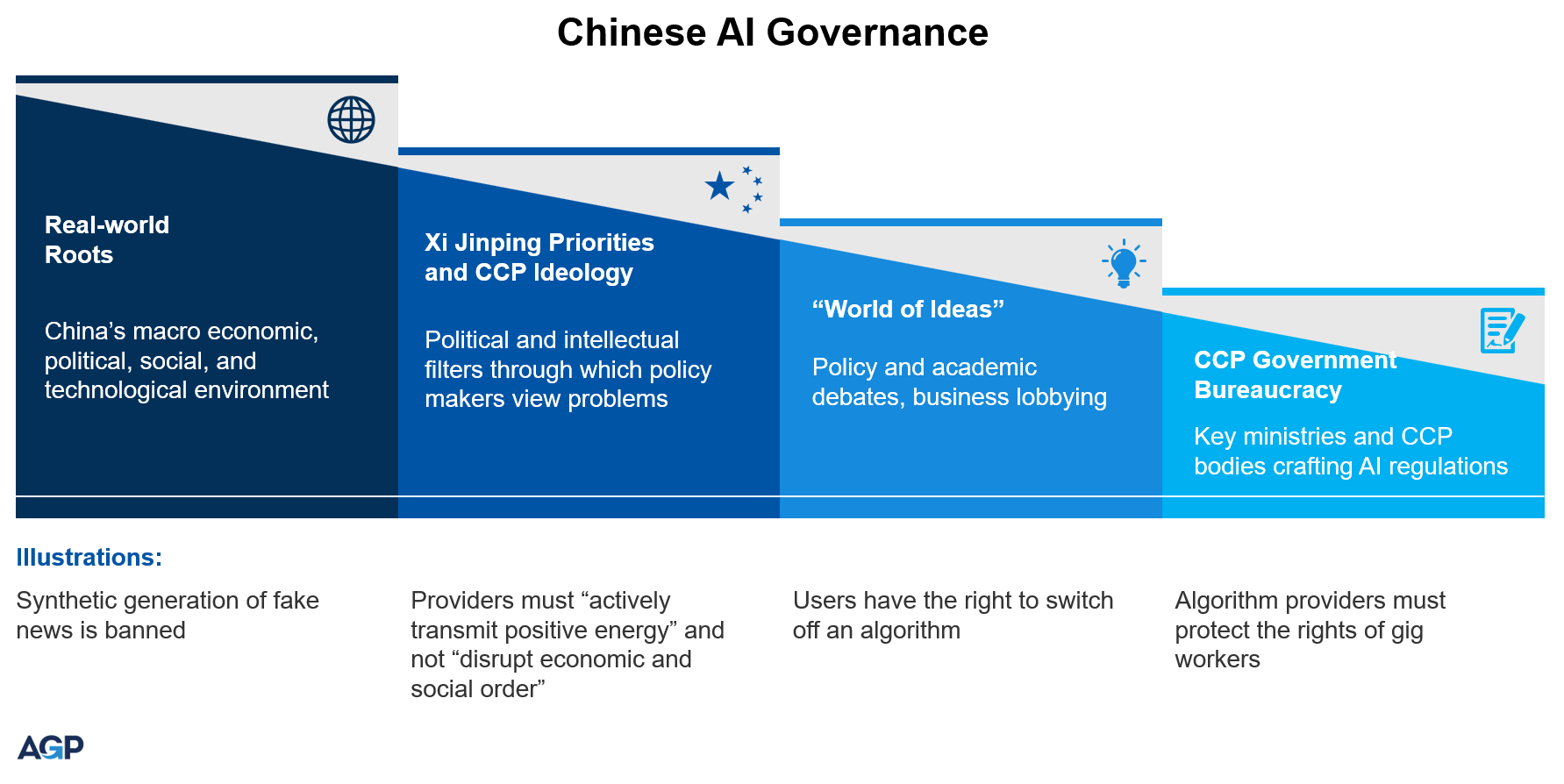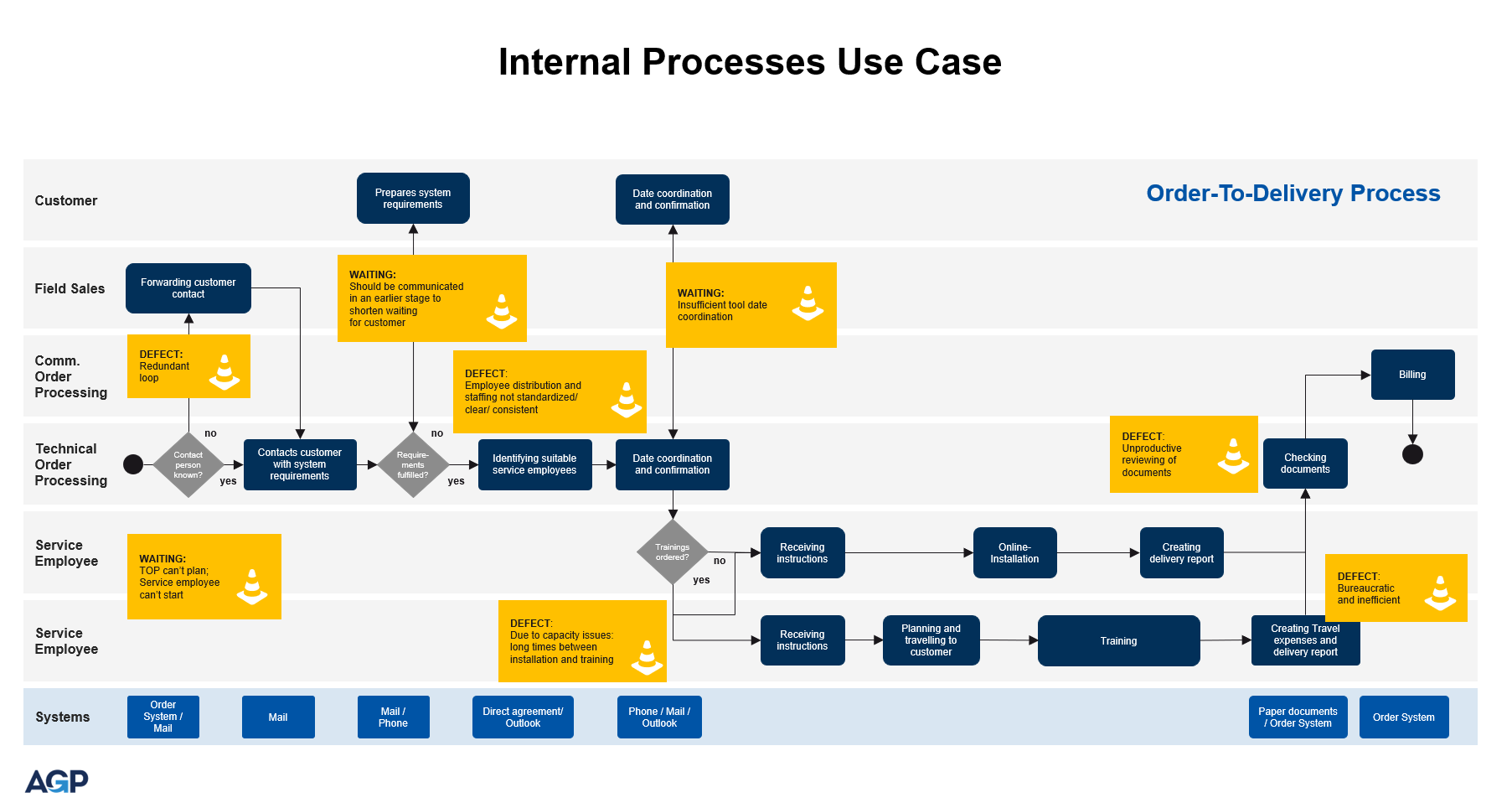Unlocking GenAI in China: A Strategic Roadmap for Executives
Localizing AI for China presents a unique blend of challenges and opportunities. It requires more than a simple replication of existing models; a tailored approach that aligns with China’s specific regulatory and market dynamics. This Insight offers senior executives a strategic roadmap to effectively harness AI’s full potential in China.
The Surge of Generative AI Across Asia
The Asia Pacific region is making significant strides in generative AI (GenAI) adoption, establishing itself as a leader in both implementation and ambition.
According to Adobe’s Digital Trends 2024 Asia Pacific and Japan report, around 65% of executives across the region have already launched AI pilots or fully integrated AI solutions, outpacing adoption rates in the U.S. (61%) and Europe (55%).
In another survey by analytics software company SAS, 1,600 decision-makers worldwide were interviewed and 83% of Chinese respondents said they used generative AI, compared with 65% in the U.S.
In APAC’s dynamic landscape, GenAI is more than just a technological advancement—it’s a strategic enabler reshaping the industry by automating tasks, enhancing customer interactions, and unlocking productivity. Companies are drawn to GenAI's power to streamline workflows and generate data-driven insights across functions such as software development, IT operations, and customer service.
Localizing AI for China
However, the intensity of this shift varies within the region, particularly in China where we see a distinct path in AI. Data governance, privacy concerns, and a skills gap are prominent. These factors are compounded by stringent data regulations and an evolving AI regulatory landscape. For companies venturing into China, deploying AI is not a straightforward replication of other models.
This reality presents a distinct challenge—and an opportunity. Senior executives planning to expand or localize AI efforts in China must go beyond technology adoption, focusing on creating a localized strategy that aligns with China’s regulatory expectations and market dynamics.
In this Insight, we present a roadmap that provides an in-depth guide to navigating this complex landscape, offering strategic steps to align AI initiatives with local priorities, ensure compliance, and build an adaptable AI infrastructure tailored for China’s unique environment.
This journey requires not only technological investment but also a commitment to local expertise, cultural understanding, and continuous adaptation. It’s a four-step AI readiness path designed to help multinational companies adopt Generative AI in China effectively.

Teach Value Generation: Educate management and operational teams on how Generative AI can create value for the organization.
Align on Business Priorities: Ensure senior management is aligned on business priorities, which provides a clear focus for Generative AI ideation.
Bottom-Up Ideation: Engage business teams in a bottom-up approach to ideate AI use cases, creating a roadmap that has ownership within the business.
Adopt a Change Management Mindset: Implement a change management mindset to ensure that skills and processes evolve to make the best use of AI.
Step 1. Teach Value Generation
Why is Generative AI considered an exciting technology for companies? The attractiveness comes from several key factors.
It democratizes access to technology: Enterprises can access advanced AI models with minimal customization, and leading AI models can be integrated into business processes quickly and efficiently, allowing companies to leverage AI capabilities without heavy investment in development resources.
Flexible usability: Generative AI has the potential to support or replace manual, repetitive digital processes, leading to greater efficiency. Complex tasks can be completed faster and with human-like quality.
Multimodal AI: Generative AI models can process multiple types of data (e.g., text, photos, videos), making them versatile tools.
Building an AI-Ready Infrastructure in China
The technical backbone of any AI system must account for the unique demands of the Chinese market. This means choosing between proprietary and open-source models based on specific needs, as both options come with distinct advantages and challenges.
Proprietary models—available via APIs from providers like OpenAI—offer scalability and ease of deployment but may face stability issues within China due to regional restrictions.
Open-source models, on the other hand, allow for greater control and transparency, enabling companies to fully tailor AI algorithms to local requirements. For many multinationals, deploying AI on local servers using open-source models not only facilitates compliance but also allows for more nuanced customization of AI systems to meet the expectations of Chinese users.
Additionally, as China’s tech ecosystem becomes increasingly multi-modal, companies must prepare their AI systems to handle diverse data inputs—from text to video and sensor data. This flexibility is essential to leverage China’s highly digital and multimedia-oriented market, where AI applications are expected to support everything from social media monitoring to real-time customer support.
Chinese AI’s Governance Policy
The Chinese government’s regulatory framework for AI is highly specific and meticulously enforced, shaped by a national imperative to promote technological advancement while safeguarding social stability. Regulations such as the prohibition of synthetic fake news generation and the requirement for AI to “actively transmit positive energy” underscore China’s distinct stance on AI ethics and usage.

For foreign companies, compliance is not optional. Yet, the regulatory landscape in China is fluid, with policies evolving to reflect new government priorities. Executives must work closely with local compliance and legal experts who can provide insights into navigating the rules without compromising innovation. Regular consultations with legal advisors can ensure that AI applications not only meet current regulations but are also adaptable to future changes.
One critical aspect of this is data governance. China’s stringent rules on data privacy and cross-border data transfer require companies to be vigilant about where and how they store data. For global companies, this often means partnering with local cloud providers, such as Alibaba Cloud or Tencent Cloud, to manage data storage and processing within China’s borders. Establishing a compliant data management strategy is crucial, as non-compliance could result in costly penalties and a compromised brand reputation.
Developing a localized AI strategy is essential, not just to comply but to compete. Already more than 117 Chinese companies have received a generative AI license from the Chinese state.

Step 2. Aligning AI with Business Objectives
Before any AI initiative can be deployed, senior executives must align it with overarching business goals, tailored to the priorities of the Chinese market.
Management can use structured frameworks like the Digital Value Canvas (DVC) to identify and rank AI opportunities based on their business impact. This tool encourages companies to go beyond surface-level metrics and to think deeply about how AI can enhance customer satisfaction, streamline operational processes, and boost revenue.

Generative AI is applicable across the DVC, but each company and business leader will have unique priorities. The management team’s expectations towards the AI portfolio often vary strongly and the DVC enables conversations about points of agreement and disagreement.

Step 3. Bottom-Up Ideation
Rather than pursuing generic AI applications, companies should focus on use cases that directly address market needs and deliver measurable outcomes.
The following framework offers a way to evaluate AI projects based on value and complexity:

No Brainers (NB): These projects should be implemented quickly, as they offer significant benefits with minimal effort.
Quick Wins (QW). Useful for gaining experience and showcasing AI capabilities, even though their impact may be limited.
Big Wins (BW). These are transformative but resource-intensive projects. Due to their complexity, only a few should be pursued at a time.
Further Evaluation (FA). These projects need re-evaluation to see if their value can be increased or their complexity reduced before considering implementation.
Use cases that improve internal processes (i.e., do not touch customers) are typically easier to implement. Mapping process inefficiencies and risks is a good starting point.

In a market like China, customer engagement is key. Chinese consumers are not only highly digital savvy but also expect personalized, immersive experiences. By prioritizing use cases that enhance customer satisfaction and brand loyalty, companies can create AI applications that resonate with local consumers.
Similarly, supply chain optimization—another priority for China’s industrial landscape—can benefit from AI-driven predictive maintenance and inventory management, reducing costs and enhancing reliability.

High-impact applications in customer service, predictive analytics for supply chains, and content personalization are examples of areas where AI can offer immediate value and help companies differentiate in a competitive landscape.
Metrics should be localized too: customer sentiment analysis, app engagement rates, and localized return on investment (ROI) models can provide a more accurate picture of AI’s value in China’s unique environment.
Aligning AI projects with these targeted business goals is a step towards ensuring that the AI roadmap is grounded in measurable outcomes that resonate locally.
Step 4. Adopt a Change Management Mindset
Adopting AI in China is a transformative endeavor, one that requires commitment at all levels of the organization. The main challenges are related to organizational coordination rather than technological development.
Change management is crucial to ensuring that teams not only understand the technology but also trust it. To this end, executives must foster a collaborative environment where departments feel involved in the AI journey.
Phased implementation is an effective strategy, allowing companies to roll out AI in manageable increments. By starting with pilot projects, companies can gather insights, refine applications, and build confidence among employees.
Open, ongoing communication about AI’s purpose, potential, and progress will further bolster trust and foster an environment where AI is viewed as a tool for growth, rather than a disruptive force.
Cultivate Local Talent and Knowledge
AI is only as effective as the people who manage it. While the technology may be global, its implementation is profoundly local.
For AI to succeed in China, companies need a workforce that understands both the technology and the local context. Upskilling teams with a focus on China-specific AI applications, compliance, and guidelines is essential.
Localized training should focus on critical areas like data management, prompt engineering, and compliance, enabling teams to operate AI systems confidently within China’s regulatory parameters. Developing "AI champions" within local teams can further enhance adoption and provide a bridge between global and regional priorities.
These AI champions, ideally selected from different departments, can foster a bottom-up approach to AI adoption. By encouraging departments such as HR, finance, and marketing to ideate and lead AI projects, companies not only democratize AI use but also ensure that each application aligns with department-specific needs. This approach not only drives buy-in but also nurtures a culture of innovation that is responsive to the fast-evolving Chinese market.
Monitoring, Feedback, and Continuous Improvement
AI is not static. Once deployed, it must be continuously monitored, refined, and optimized. For companies operating in China, this means paying close attention to metrics that reflect both regulatory compliance and localized performance. Regular feedback loops with local teams provide insights that help refine AI systems in real-time.
Staying agile in the face of evolving policies is equally important. As China continues to refine its AI regulations, companies must be ready to adapt their strategies. This may involve reallocating resources to meet new compliance demands or adjusting data management practices. By integrating flexibility into the AI roadmap, executives can ensure their AI initiatives remain both compliant and competitive in the Chinese market.
Final Word
For senior executives, localizing AI for China goes beyond technology. It requires a careful balancing act of aligning business objectives, adhering to stringent regulations, and investing in local talent and infrastructure.
With a thoughtful, structured approach, companies can harness AI not only to meet compliance but also to drive competitive advantage and innovation in one of the world’s most dynamic markets. In doing so, they can pave the way for a future where AI is not just a tool, but a core component of their success in China.
Related Insights.








